
One of the perks of living in Athens is the sunny weather year-round, a feature Athenians know how to take full advantage of. Much of daily life takes place in the open air: Apart from cafés, bars, restaurants and cinemas, people spill out onto the pavements, picnic in parks, take over hills and overcrowd beaches, stadia and all sorts of public spaces. Take the time to discover the city’s few green spaces by talking a walk through the National Gardens or the Athens Zoo. The small monastery of Kessariani is a true artistic treasure, though rarely visited by tourists. Similarly, a visit to Athens’s First Cemetery offers a chance to admire rare 19th-century marble sculpture and to learn about Greek history. Another option is to join the hordes of city folk who flock to the nearby beaches, or hangout in the southern suburbs of Glyfada and Palio Faliro.
Faliro and Glyfada
Starting from Palio Faliro and ending beyond Sounion, the southern Athenian seaside is a sight to see in its own right. Either you want to go swimming, or shopping and want to avoid the city centre, Glyfada is good for both. The tram runs along two lines towards the south of the city, one ending in the Neo Faliro district (close to Piraeus port) and the other line ending at the quiet suburb of Voula (towards Sounio). In Palio Faliro, the Trocadero park (Tram station: Trocadero) has been spruced up in recent years and transformed into a meeting place for couples and youngsters who take their leisurely walks around the area. It houses a beautiful open-air cinema, landscaped areas for walking, some pricey cafés, a restaurant and a few shops selling sports apparel.
If you prefer to head towards Glyfada, you can stop at Alimos Marina for a walk amongst the sleek sailing boats and a cup of frapuccino, or lunch at the spacious, open all-day venue Kitchen Bar (3 Posidonos, Kalamaki, 210 9812004). The marina is also home to the nicely-decked Skippers Café-Bar (Pier 1, 210 9880282) originally a hangout for windswept skippers. Taking the tram once again, you find yourself at the go-kart track of Aghios Kosmas (Tram station: Aghios Kosmas) where you can test your driving skills. On the way you will see plenty of public, as well as private beaches where you can enter for a fee that is higher on the weekends.
When the tram takes a sudden left turn you have reached Glyfada (Tram station: Platia Katraki), a somewhat Americanized neighbourhood where the first shopping centres and fast-food chains appeared in the 80s. Shopping is de rigueur here, with fashionistas visiting the boutiques daily and high-end brand stores spread around the main Angelou Metaxa, Lazaraki and Kyprou Streets. When you need to take a breather, pop into Vincenzo (1 Yannitsopoulou, Glyfada, tel: 210 8942310, 425), for the best Italian pasta in town. For more restaurants and bars in the area, look at relevant Food and Bar sections.
Lycavittos Hill
Athens being hilly, there are several points from where you can enjoy superb views over the city. One is the Acropolis Hill and the other is Lycavittos Hill, a sharply-rising limestone rock reaching 277 metres above sea-level. The birds-eye-view from the top is amazing and encompasses Mount Parnitha in the north, the Acropolis Hill that crowns the city centre, and open views to the south all the way to Piraeus and the Saronic Gulf. Perched at the top is the small white-washed church of Aghios Georgios, which is beautifully lit in the evening. There is also the open-air Lycavittos theatre nearby, which hosts various theatre performances and concerts during the summer, as well as classy and pricey Orizontes café-restaurant, where you can catch your breath and enjoy the view. The fastest and most hassle-free way to reach the top is to take the two-minute ride up the funicular. The starting point is the corner of Kleomenous and Ploutarhou Streets in Kolonaki. If you are set on doing it on foot it is best to set out from Loukianou Street, but bear in mind that there are no signs to point you to the top.
Kaisariani monastery
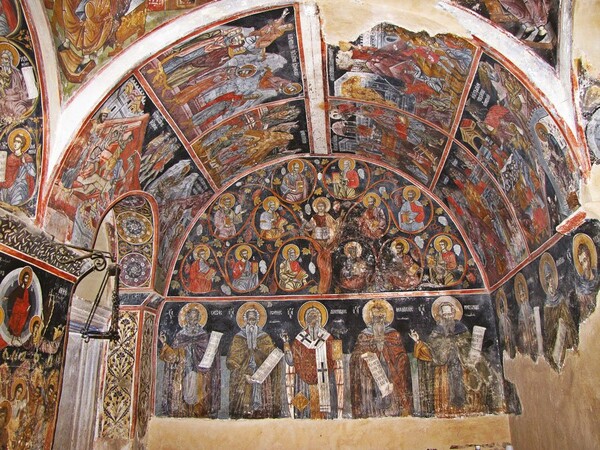
Inside the serene forests of Mount Imittos stands the medieval Kessariani Monastery, built in the 11th century CE. It was named after the Roman Emperor (kaisaras in Greek) Hadrian, who built an aqueduct to make use of a nearby fresh-water spring. The spring is still found in the courtyard of the monastery, and myth has it that it has powers that bring fertility. The church type itself is domed cruciform, with its dome resting on four ancient marble columns of Ionic order. Thankfully its 16th-century frescoes still survive, and are representative of the Cretan school of painting. The painting of Madonna holding the baby Jesus contrasts beautifully with its black background, while Christ’s depiction on the dome is considered to be one of the best of its kind. Surrounding the monastery are secondary buildings, such as the residential quarters of the monks, an old bath-house and the kitchens. Southwest of the monastery lie the remains of another church dating from the 10th century. The view from the hill is stunning. To get there, take buses 223 or 224 from Akadimias Street. There is a two-kilometre walk from the foot of the hill up to the monastery.
Athens First Cemetery
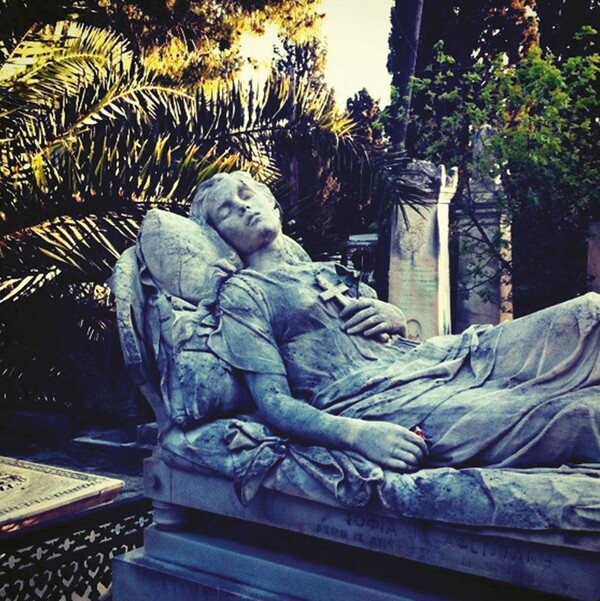
It may sound like the last place you would like to visit in any city, but Athens’ First Cemetery, founded around 1837, reveals part of the cuty’s history. Serving as the burial ground for prominent Greeks and philhellenes, this garden-like cemetery is a peaceful place filled with pine and olive trees, with well-tended marble graves scattered among them. Strolling among its lanes you will come across some lavishly-decorated tombstones, revealing the excellent quality of Greek 19th-century sculpture, influenced by the Romantics, as well as the social status of the people buried beneath them.
Many of these monuments are the works of well-known sculptors, the most prominent being The Sleeping Maiden, made by Tinian artist Yannoulis Halepas in 1878 for the grave of Sophia Afentaki. The girl’s calm expression and relaxed pose give the impression that she is sleeping. Further along is a haunting memorial of the 100,000 Greeks who died of hunger during WWII. The grave of actress-turned-politician Melina Mercouri is near the entrance, while zigzagging among the lanes will lead you past the graves of German archaeologist Heinrich Schliemann, Nobel laureate George Seferis, Oscar-winning actress Katina Paxinou, as well as Prime Ministers and heroes of the Greek War of Independence. The Cemetery is open all day and admission is free.
In Greek: Proto Nekrotafio Athinon, Anapafseos & Trivonianou, Mets, Tel: +30 210 9221621
A walk around Kastella, Piraeus
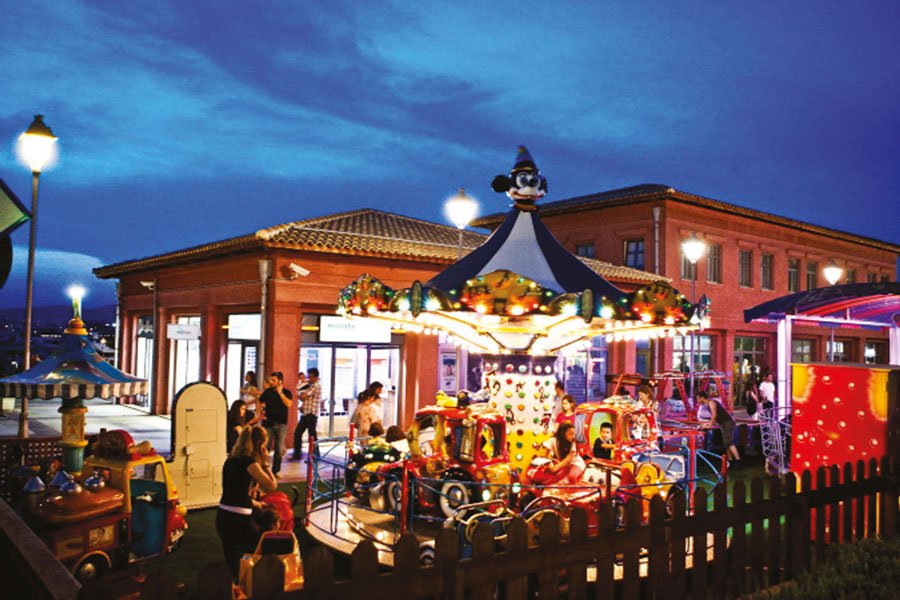 Piraeus is the biggest port in Greece and is widely known as the gateway to the islands. Much of its old character has disappeared as a result of unchecked development – just like Athens. One of its few neighbourhoods that retain a unique style is Kastella, perched on a hill overlooking Mikrolimano. The bus 040 from Syntagma will drop you at Piraeus’s Municipal Theatre (Thimotiko Theatro). From there take the trolley 20 towards Neo Faliro. To start your walk, get off at Naftikos Omilos or Skalakia station. The winding Papanastasiou road is dotted with neo-classical listed mansions which escaped the bulldozers. Epidavrou and Pafsilipou streets which begin below Papanastasiou road will lead you towards the seaside Akti Mikrolimanou, filled with cafés and fish taverns. Piraeus’s Yachting Club (Istioploikos) at one end of Mikrolimano offers coffee and lunch, as well as great views of Kastella and its buildings.
Piraeus is the biggest port in Greece and is widely known as the gateway to the islands. Much of its old character has disappeared as a result of unchecked development – just like Athens. One of its few neighbourhoods that retain a unique style is Kastella, perched on a hill overlooking Mikrolimano. The bus 040 from Syntagma will drop you at Piraeus’s Municipal Theatre (Thimotiko Theatro). From there take the trolley 20 towards Neo Faliro. To start your walk, get off at Naftikos Omilos or Skalakia station. The winding Papanastasiou road is dotted with neo-classical listed mansions which escaped the bulldozers. Epidavrou and Pafsilipou streets which begin below Papanastasiou road will lead you towards the seaside Akti Mikrolimanou, filled with cafés and fish taverns. Piraeus’s Yachting Club (Istioploikos) at one end of Mikrolimano offers coffee and lunch, as well as great views of Kastella and its buildings.
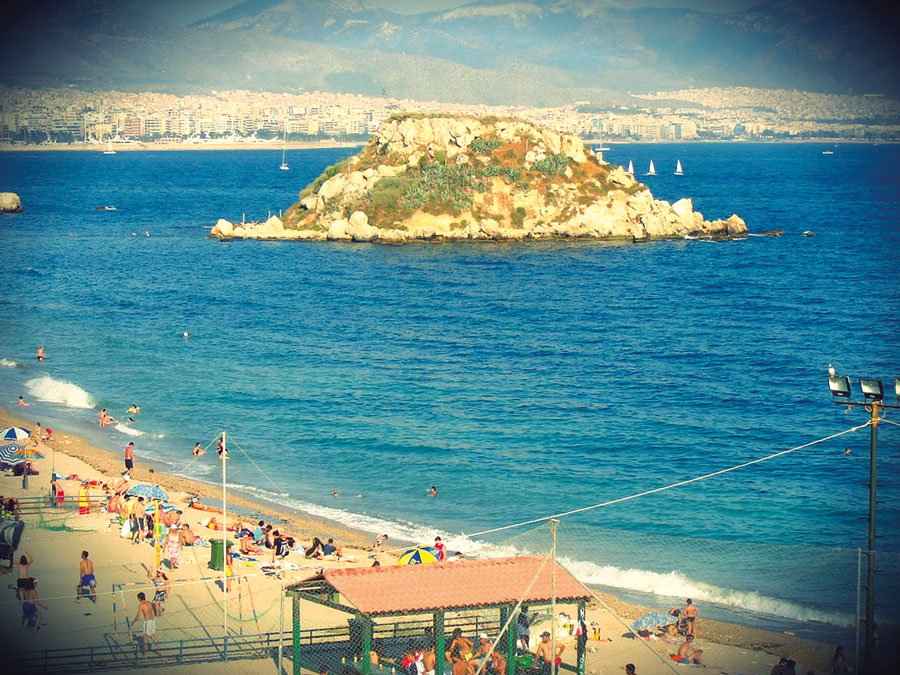 The best way to enjoy a pleasant stroll around Kastella is to go during the day, before the crowds swarm the seaside and local bars pump up the music volume. If you’re contemplating a quiet lunch, find the colourful To Limanaki (4 Navarhou Botsi, Kastella), a small mezedopolio offering raki (thus called rakomeladiko) - the Cretan tsipouro.
The best way to enjoy a pleasant stroll around Kastella is to go during the day, before the crowds swarm the seaside and local bars pump up the music volume. If you’re contemplating a quiet lunch, find the colourful To Limanaki (4 Navarhou Botsi, Kastella), a small mezedopolio offering raki (thus called rakomeladiko) - the Cretan tsipouro.
Swimming and socializing – Faliro, Alimos, Glyfada, Sounio
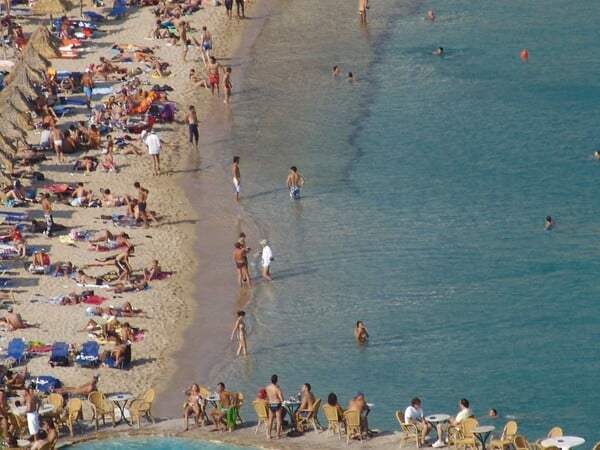
Few capitals can boast about their beaches. The prefecture of Attica is blessed with an endless coastline, filled with beaches and small coves waiting to be discovered. Plan a day at the beach, taking only the basics (hat, towel and plenty of sunscreen), but remember that beaches are packed on the weekends, so it’s preferable to go during the weekdays. Certain beaches in Alimos, Glyfada, Voula and Varkiza are run by the country’s National Tourist Organization (EOT) and others by private individuals charging an admission fee. Organised beaches offer umbrellas, lounge chairs, changing cabins and self-service restaurants. If you want to avoid paying the some times hefty entry ticket (18 euros in Vouliagmeni), or you can continue further down the road and choose a beach open to all.
If you get off at Edem tram station, you’ll find yourself in the free, long beach of Palio Faliro. Continuing with the tram, you reach Alimos (station: Loutra Alimou) and its two beaches: The left one is free, while the right one, named Blue, has an entrance fee and a café right on the sand.
Agios Kosmas is also one of the few remaining beaches where access is free. Gathering young and old alike, it has a lifeguard, free umbrellas and showers. To get there, take the tram towards Voula and get off at Agios Kosmas station. Continuing further, the tram reaches Glyfada (station: Paralia Glyfadas). The beach is a three minute walk from the main road and is also free. Further south, the Lake of Vouliagmeni is an unbeatable experience, as the dark blue waters pouring from some underground source is supposed to have healing properties.
Continuing south, you reach Varkiza town, where locals crowd the pebbled beach and a flat cemented platform, ideally formed for dives. From there onwards, there’s a series of small coves and beaches to choose from. As most of these beaches bear no signs, the best way to see them is to pull over at the side of the road and decide from above if it’s worth it. Reaching Sounio you’ll find Legrena beach with its clear blue waters and the added advantage of Poseidon’s Temple in view. Bear in mind that nudism is not allowed anywhere as these beaches are usually packed with families. However, some beaches are often adjacent to smaller and more private ones and if you are there on a weekday and choose a discreet location you could get away with bearing skin. The easiest way to continue beyond Voula (the tram ends there), is to get a taxi or take the E22 bus towards Saronida.
Sounio and the Temple of Poseidon
The beautiful temple dedicated to sea-god Poseidon is a popular attraction for locals and tourists alike, not just for the well-preserved ancient monument, but also for the clear blue beaches surrounding it and the picture-perfect sunset. The route leading to Sounio is a sight in its own merit as you drive next to beautiful beaches and coves, small towns and cafés. The temple crowns a 60-metre-high rock and was built in the 5th century BCE, during Pericles’s “Golden Age”. The hill itself won its place in history when, according to mythology, king Aegeas jumped to his death from the cliffs believing his son Theseas had died in Crete trying to kill the Minotaur. The temple is made of marble and originally had 34 Doric-style columns, though today only 15 survive. The ideal time to visit is in the evening, when most tourists groups have left and the light is softer. Watching the sunset from the cliff and the blue sea underneath is an unforgettable experience. To get there: Take the tram from Syntagma towards Voula, from where it is best to hire a taxi. You can combine Sounio with a swim at nearby Legrena beach and a bite at one of the local fish tavernas.
Off the beaten track: A walk in Tatoi
 About 15 kilometres north of Athens lays the beautiful forest of Tatoi, a widely unexplored area of Attica. The area housed the summer palace and estate of the former king of Greece Constantine, who was abdicated when monarchy was abolished by plebiscite on December 1974. After a legal settlement with the Greek state, the estate became public property and opened up for visitors. Walking within the forest you are stunned by the lush vegetation, the small rivers and the 10-meter waterfall, which offers an unparallel sense of serenity and gives you the impression you are miles away from civilisation. The water from the river ends up in the flume of Helidonous, creating beautiful scenery.
About 15 kilometres north of Athens lays the beautiful forest of Tatoi, a widely unexplored area of Attica. The area housed the summer palace and estate of the former king of Greece Constantine, who was abdicated when monarchy was abolished by plebiscite on December 1974. After a legal settlement with the Greek state, the estate became public property and opened up for visitors. Walking within the forest you are stunned by the lush vegetation, the small rivers and the 10-meter waterfall, which offers an unparallel sense of serenity and gives you the impression you are miles away from civilisation. The water from the river ends up in the flume of Helidonous, creating beautiful scenery.
 Apart from nature, one can visit the summer residence of the former royal family, the stables, stalls and other buildings. The abandonment is evident everywhere, as the place had been closed up for 36 years, but the scenery is unrivalled. The government has said it plans to turn the former royal residence into a museum in the future, but no specific plans have been presented yet. To get there, you need to rent a car, or hire a taxi. Initially you reach northern Varibobi suburb and then head towards Katsimidi. About 5 kilometres after the area Thea you reach the estate’s main gate. Park the car and continue by foot.
Apart from nature, one can visit the summer residence of the former royal family, the stables, stalls and other buildings. The abandonment is evident everywhere, as the place had been closed up for 36 years, but the scenery is unrivalled. The government has said it plans to turn the former royal residence into a museum in the future, but no specific plans have been presented yet. To get there, you need to rent a car, or hire a taxi. Initially you reach northern Varibobi suburb and then head towards Katsimidi. About 5 kilometres after the area Thea you reach the estate’s main gate. Park the car and continue by foot.
Tatoi, north of Athens
Swimming pools
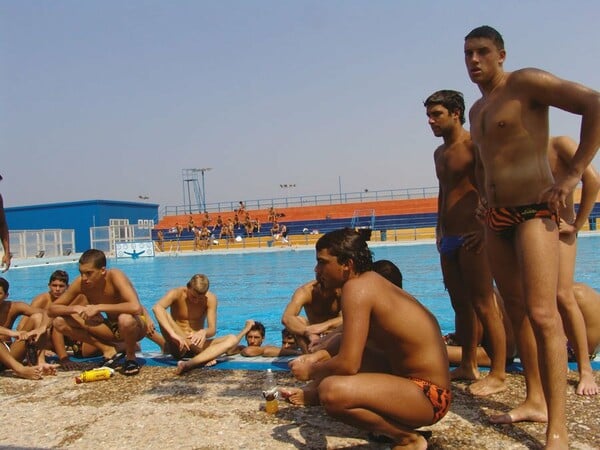
If you can’t be bothered to take the bus to the beach, you can always cool yourself in a pool. Some central hotels offer deals that include the use of the pool, a lounge chair, drinks at the bar and even a room, at a sometimes hefty price.
Hilton
- 46, Vasilisis Sofias, Tel: +30 210 7281000 / Metro: Evangelismos
For 25 euros from Monday-Friday and 40 euros on the weekends and holidays you may use the pool, loungers and will also be provided with towels.
Saint George Lycabettus
- 2 Kletomenous, Kolonaki, Tel: +30 210 7416000 / Metro: Evangelismos
It houses a colonial-style pool which will set you back 35 euros; towel, loungers, umbrella and refreshment included.
Athens Imperial Hotel
- 1 Achileos & Megalou Alexandrou Street, Karaiskaki Square, Tel: +30 210 5201600 / Metro: Metaksourgio
Offers its pool for about 25 euros (price to be finalized in May) including a towel and loungers.
Fresh hotel
- 26 Sofokleous, Tel: +30 210 5248511 /Metro: Omonia
Its pool is quite small, but is available daily from 0900 to 1900, for about 20 euros (price to be finalized in May), plus towel, lounger and a coffee or soda drink.
Ledra Marriott
- 115 Leoforos Sygrou Tel: +30 210 9300000 /Metro: Sygrou-Fix
The hotel allows use of the pool only if you book a room for a half-day (from 1000 to 1800). The bill for use of a room, single or double climbs to 96 euros.




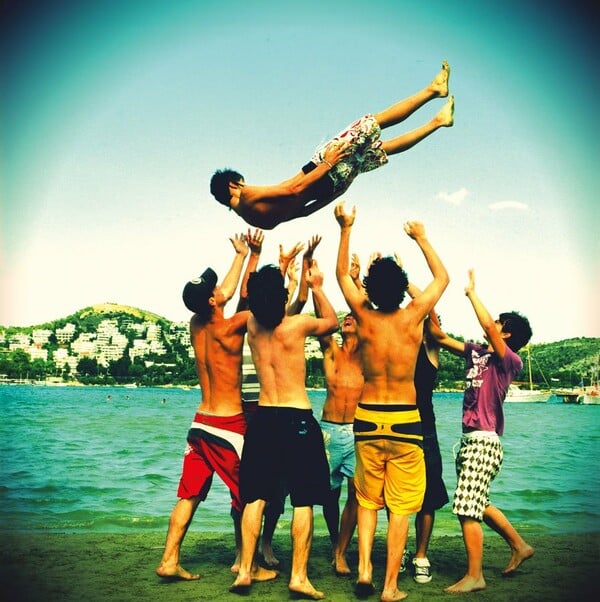

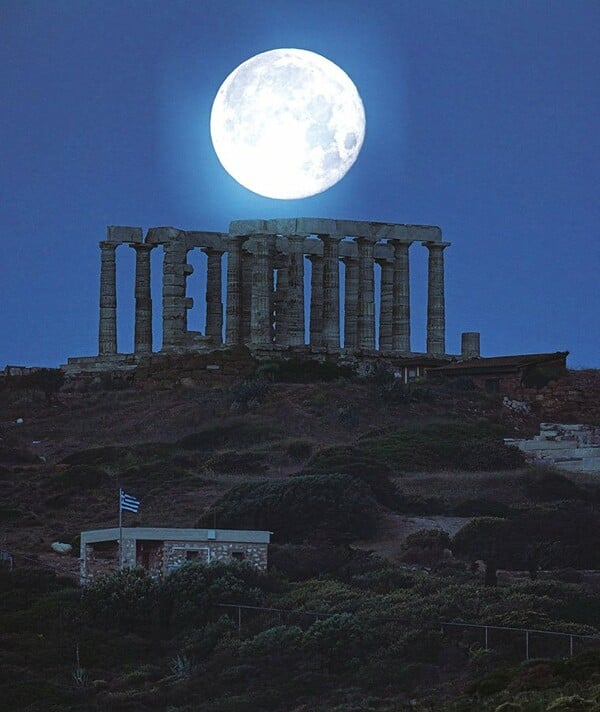








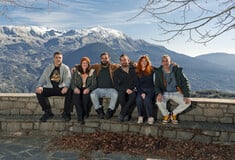



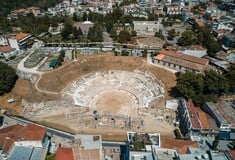
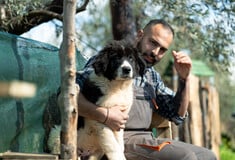

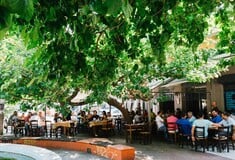







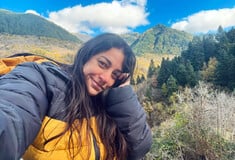
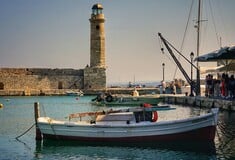
σχόλια